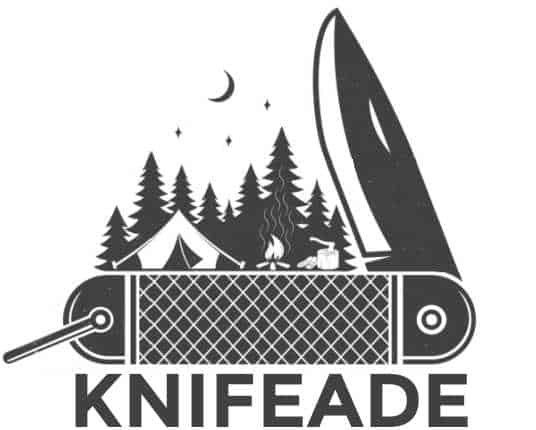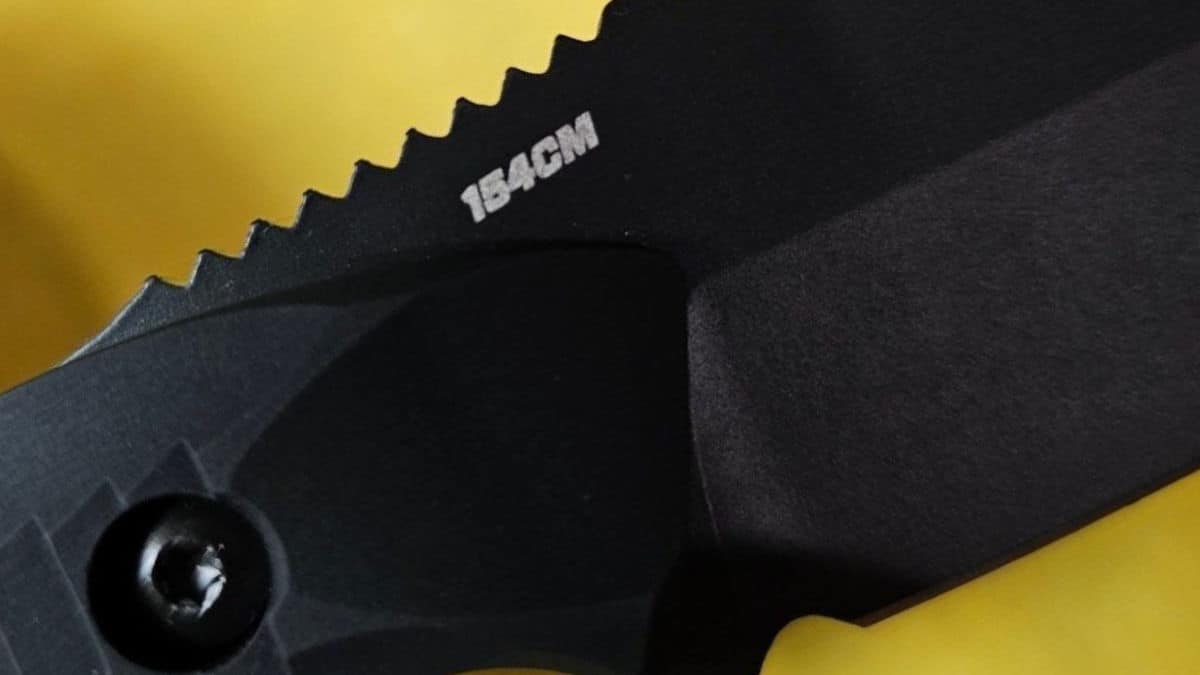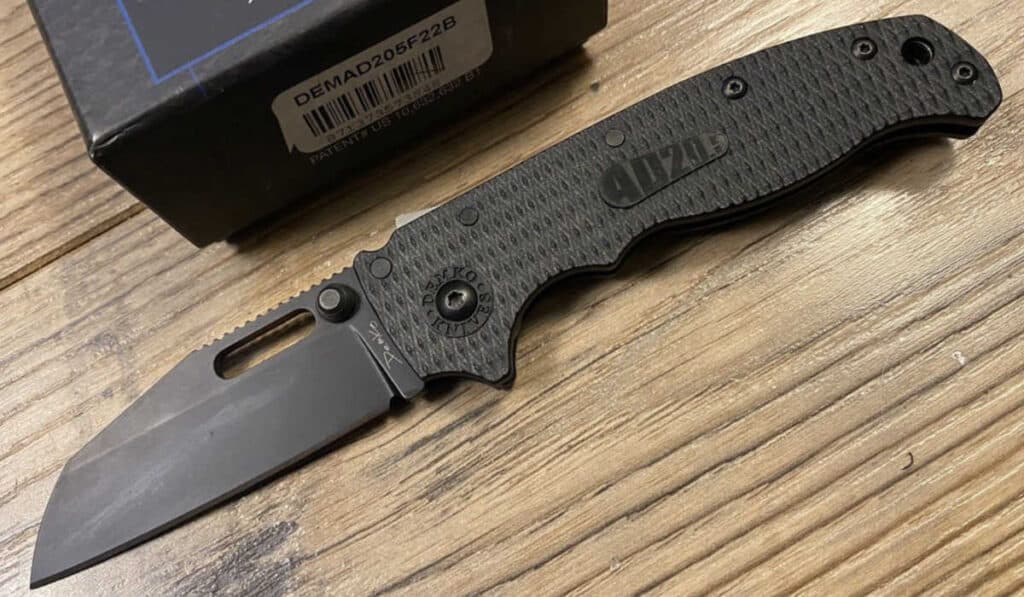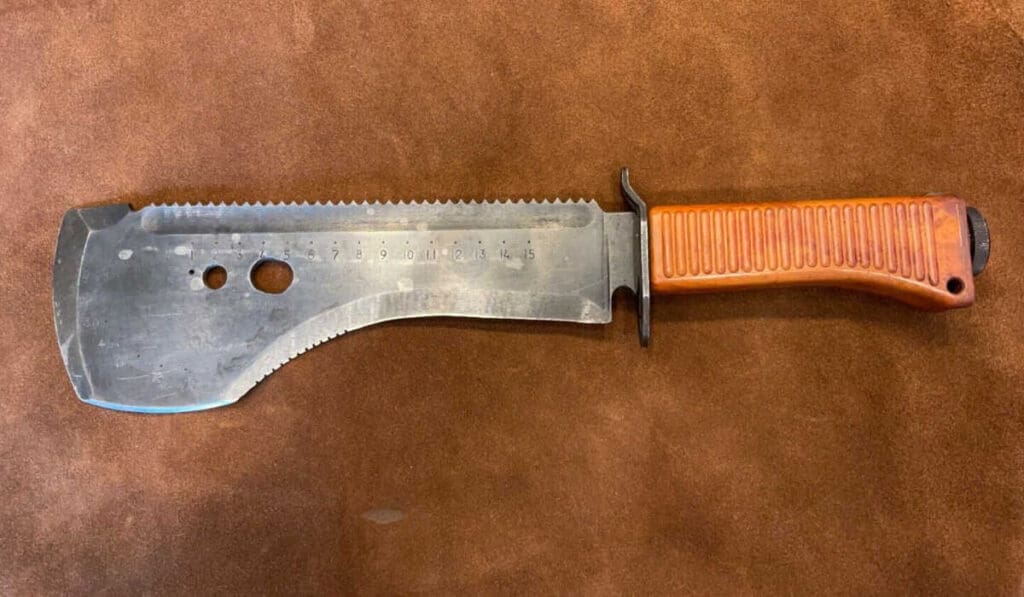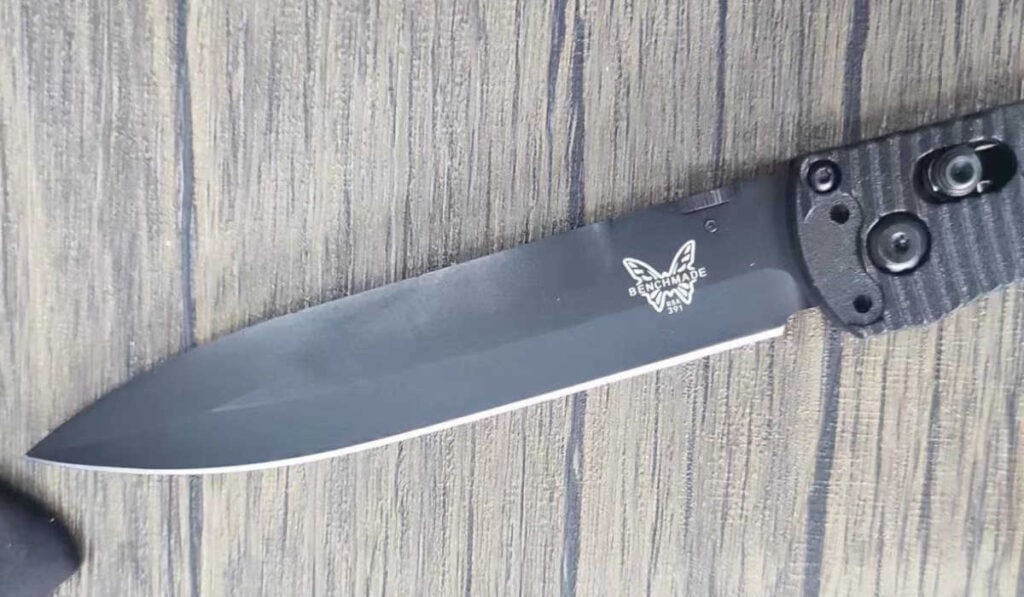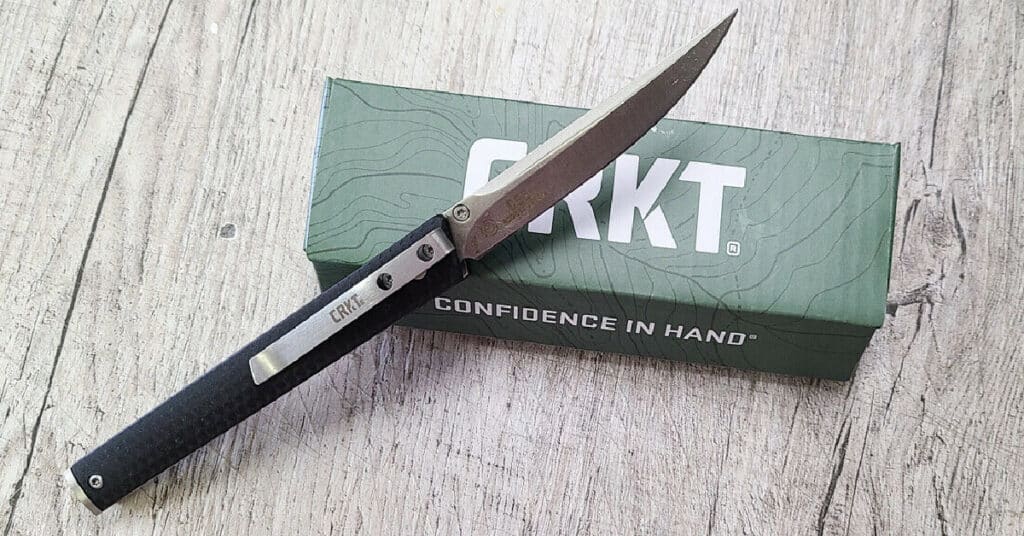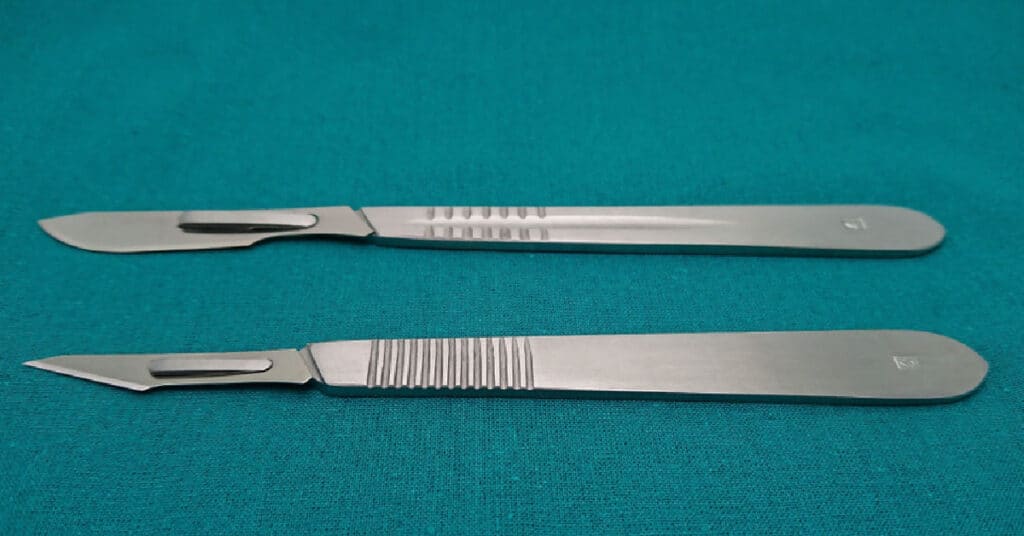Last updated on July 14th, 2023 at 02:35 pm
As an Amazon Associate I earn from qualifying purchases.
At A Glance
N690, produced by Bohler, stands out for its superior corrosion resistance, toughness, and good edge retention, making it ideal for general-purpose knives and usage in challenging conditions. In contrast, 154CM, developed by Crucible Industries, features high hardness and excellent edge retention but is slightly more susceptible to chipping and corrosion, hence suited for heavy cutting tasks. The final decision between N690 and 154CM hinges on the intended use of the knife and personal preferences.
Top Rated Knives
N690
154CM
The composition and properties of a knife’s blade steel are pivotal considerations when selecting a knife. N690 and 154CM are two widely recognized blade steels, frequently contrasted due to their properties. In this article, we will put N690 and 154CM under the microscope, focusing on their composition, hardness, toughness, corrosion resistance, edge retention, and ease of sharpening, to determine which steel comes out on top for knife blades.
Whether you’re a seasoned knife aficionado or a newbie exploring your options, the diversity of knife-making materials can be overwhelming.
To assist in illuminating this multifaceted subject, we’re going to embark on an extensive comparison between N690 and 154CM, two favored knife steel types.
We’ll examine their compositions and compare their hardness, toughness, corrosion resistance, edge retention, and ease of sharpening to see which one excels for knife production.
Steel Background
Before plunging into the comparison, it’s crucial to have a basic understanding of each steel type and how it’s produced.
N690
N690 is a high-end stainless steel produced by Bohler, an Austrian steel company. It’s widely known for its excellent corrosion resistance and high hardness, making it a popular choice for premium knife blades. Its vanadium and cobalt content also contribute to its superior edge retention and toughness.
154CM
154CM is a martensitic stainless steel developed by Crucible Industries. It was originally created for jet engine fan blades but later became popular in the knife industry due to its high hardness, excellent edge retention, and good corrosion resistance.
➤ Read More: 154CM Knife Steel Review
Steel Composition
The chemical composition of each steel is the first point of comparison.
N690
- Carbon: 1.07%
- Chromium: 17.30%
- Molybdenum: 1.10%
- Vanadium: 0.10%
- Cobalt: 1.50%
- Manganese: 0.40%
- Silicon: 0.40%
154CM
- Carbon: 1.05%
- Chromium: 14.00%
- Molybdenum: 4.00%
- Manganese: 0.50%
- Silicon: 0.30%
- Phosphorus: 0.03%
- Sulfur: 0.02%
From the above composition, it can be inferred that N690 has more Chromium but less Carbon and Molybdenum than 154CM, suggesting superior corrosion resistance but potentially less hardness and wear resistance.
N690 vs 154CM – Complete Comparison
Hardness
Hardness is a critical metric for knife steel as it affects edge retention and wear resistance.
N690 has a Rockwell hardness (HRC) of 58-60, delivering an excellent balance between toughness and edge retention. Its high hardness ensures excellent wear resistance, allowing it to withstand heavy usage without chipping or breaking.
154CM has a Rockwell hardness (HRC) of 58-61, rivaling N690 in terms of hardness and wear resistance. Although it can sustain heavy use, it is slightly more prone to chipping compared to N690.
Toughness
Toughness is the steel’s ability to resist chipping and cracking during use.
N690 exhibits high toughness due to its balanced chemical composition, making it a solid choice for knives intended for heavy-duty tasks. The presence of cobalt in N690 improves its toughness and wear resistance, making it a durable choice for various applications.
On the other hand, while 154CM exhibits good toughness, it is slightly more susceptible to chipping compared to N690 due to its higher hardness.
Corrosion Resistance
Corrosion resistance refers to the steel’s ability to resist rust and oxidation.
N690, with its higher Chromium content (17.3%), exhibits excellent corrosion resistance, making it a fantastic choice for knives used in wet or humid conditions.
154CM, though considered a stainless steel, has lower Chromium content (14%), making it slightly less resistant to corrosion than N690.
Ease of Sharpening
The ease of sharpening refers to how conveniently the steel can be sharpened using standard methods.
N690, while maintaining good edge retention, is relatively easy to sharpen, making it a suitable choice for general-purpose knives.
154CM, due to its high hardness, can be a bit more challenging to sharpen than N690. However, once sharpened, it maintains its edge well, making it suitable for heavy cutting tasks.
Edge Retention
Edge retention refers to the steel’s ability to maintain its sharpness during use.
Both N690 and 154CM exhibit excellent edge retention due to their high hardness. However, N690 may have a slight edge due to its Cobalt and Vanadium content.
Price
As a premium knife steel, N690 tends to be more expensive than 154CM. However, its superior properties and corrosion resistance justify the price.
154CM offers a more budget-friendly alternative with excellent hardness and edge retention, though it lacks a bit in corrosion resistance compared to N690.
Conclusion
Both N690 and 154CM are top-notch blade steels, each boasting its unique strengths and weaknesses. N690 excels in terms of corrosion resistance and toughness and is slightly easier to sharpen, making it an excellent choice for general-purpose knives or ones intended for use in challenging conditions. 154CM, known for its high hardness and edge retention, is a suitable choice for heavy cutting tasks, although it’s slightly more prone to chipping and corrosion.
Ultimately, the decision between N690 and 154CM will boil down to the intended use of the knife and personal preferences. Both are excellent choices for knife-making and are employed by many knife manufacturers. It is crucial to choose a knife from a reputable brand and manufacturer to fully realize the potential of these steel types.
Do Sheepsfoot Blades Have A Purpose? (Cuz They’re Ugly…)
Spetsnaz Machetes – Blades Of The Russian Special Forces
What Is The Actual Purpose Of A Spear Point Knife Blade?
CRKT CEO Review – Coolest, Most Worthless Knife Ever?
How Sharp Is A Scalpel? (Is It Sharper Than A Razor?)
Can You Shave With A Knife? (Yes, Here’s How)
As an Amazon Associate I earn from qualifying purchases.
